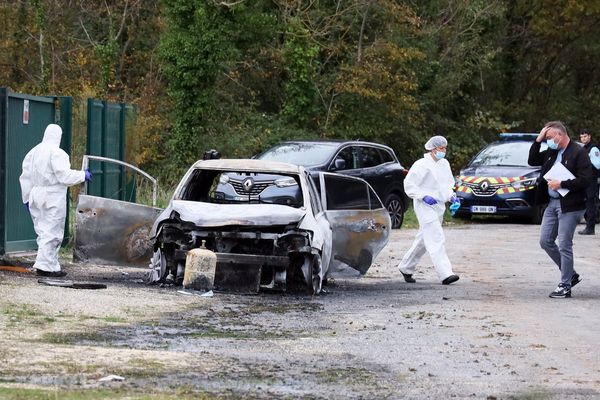
Within minutes of leaving Edinburgh’s Waverley station, we’ve shaken off the urban sprawl and entered a world of emerald hills, meandering rivers, and tiny blink-and-you’ll-miss-them villages. There are buzzards and deer, too. Under brilliant blue skies we surge into a land bathed in history and intrigue.
I’m back on the Borders Railway for the first time since September 2015, when I joined the first passenger train to run on the reopened Borders line in almost half a century. The journey from Edinburgh to Tweedbank is only an hour, but today I’ll be venturing further: I’m hiking for three days in search of both history in the Borders Badlands and a brace of new museums that are bringing that tumultuous history alive.
For centuries the Borders were fought over by England and Scotland with rampaging armies battling north (and south). The “Borders Reivers”, who swept back and forth across the frontier, are still celebrated at annual festivals in Borders towns. Today, the rolling hills of Scotland’s south-eastern flank are peaceful. Decades of economic depression are easing too. Yes, many of the Tweed mills that swallowed up swathes of the Ettrick Forest have gone, but the new Borders Railway line has opened the area up to a new wave of historically minded visitors – in a part of Scotland that is unexplored, compared with Edinburgh and the Highlands.

Top of my list of must-sees and just an arrow shot from the Borders Railway Line’s penultimate stop, Galashiels, is the world’s largest community-created tapestry. Galashiels is a former textile town, and its riot of modern architecture is evident in the striking concrete angles of the stand Peter Womersley designed for Gala Fairydean Rovers’ stadium and the dramatic pitched roof of the Great Tapestry of Scotland Museum.
An avant garde architectural creation that opened last year, the museum is home to tapestries twice the length of the Bayeux, which tell the story of the nation from pre-history through to the opening of the Scottish parliament in 1999. Susie Finlayson, my guide and self-taught stitcher (who also worked on the tapestry), sweeps me from volcanic ferment to modern Scotland. “Originally it was just meant to be 80 panels. Then it became 120 and then 160, with over 1,000 weavers involved,” she says.

From here, my hike begins as I join the 212-mile coast-to-coast Southern Upland Way, walking east along the River Tweed. The route passes Tweedbank station, then continues to Melrose, just two miles on. Melrose itself is a crossroads of walking trails: the 67-mile Borders Abbeys Way circles through it, connecting the quartet of Borders Abbeys, and the St Cuthbert’s Way to Lindisfarne begins at Melrose Abbey (where the heart of Robert the Bruce, King of Scots, was buried).
This trim market town, where I stay for two nights at the Townhouse Hotel (run by the Henderson family for 50 years), turns my understanding of the Roman occupation of Scotland on its head. The site of a Roman fort, Trimontium (named after the three peaks of Eildon Hills), lays just east of Melrose – and the brilliantly revamped Trimontium Museum explores its history. Started in AD80 Trimontium was a permanent garrison, three times the size of the largest fort on Hadrian’s Wall, making it the largest Roman camp in Scotland.
“What we’re finding is that Scotland was Rome’s Afghanistan,” says the museum’s director, Dr John Reid. He says that recent digs support the idea that Scotland was much more unified and organised in Roman times than previously thought. “Hadrian’s Wall was needed to counteract what was perhaps ‘Scotland’ centuries before we normally think of Scotland as a concept.”

Continued blue skies the next morning tempt me to follow the Romans into the hills, on St Cuthbert’s Way. I strike up one of the summits of Eildon Hills towards the earthworks of an old hill fort. In under an hour, I’m gazing down at the site of Trimontium, where digs are ongoing.
If you choose to do this walk make time to stop at the memorial to Thomas the Rhymer, a Scottish poet who was said to possess the gift of prophecy. He claimed he was taken away from this spot into a fairy world, for seven years. If you’ll indulge in the veracity of his stories and prophecies then perhaps there is some truth in the local legend that would have King Arthur buried in the Eildons, too.
Folk tales don’t fill stomachs, but the Main Street Trading Company in the wee village of St Boswells, a few miles’ walk on, does. The cafe has won awards for its local produce and bountiful bookshop. Its walls are lined with lovingly curated art works and the faces of a litany of authors, including novelist Maggie O’Farrell who found “A bookshop so perfect, you might have dreamt it.”

After lunch I rejoin the Borders Abbeys Way, just a couple of miles upriver, at the site of Scotland’s first chain bridge, built in 1817. The current 1872 structure feels incongruously modern, so I head across it to the Temple of the Muses, a dramatic tribute to James Thomson, on the opposite bank of the Tweed. Some Scots aren’t fans of Thomson, writer of the words to Rule Britannia! I prefer to associate him with his poetic love letter to nature: The Seasons. We share a bucolic moment watching an otter through sun-dappled trees as he works his way along the riverbank.
The statue of William Wallace, leader of the First War of Scottish Independence, glowers from a bluff above. I stop for a rest nearby, gazing down on the river and the remnants of the once great forest where he roamed, Robin Hood-style, with his mercurial men, as the now silhouetted Eildons ease into slumber.

Walking back down to the banks of the Tweed, I pay my respects to Sir Walter Scott at Dryburgh Abbey, where the great novelist and poet is buried. Of all the gloriously ruined abbeys in the Borders, Scott eulogised Dryburgh the most. The last of the sun hangs low through the trees as I listen to the gurgling of the salmon and trout-rich river by a plush abode Scott would have approved of, Dryburgh Abbey Hotel, where pheasant awaits.
On my third and final day I track the Tweed to Kelso. On this stretch of the Borders Abbeys Way I see more birds of prey than people. My last stop is Floors Castle, where the Innes-Ker family has managed to stay on the winning side of history and retain Scotland’s largest country house. This is “old world” Borders money and power, but instead of a triumphalist Cumberland portrait I am greeted by the castle’s newest incumbent, the 41-year-old jeans-clad Duke of Roxburghe, who is holding his wee girl.

Operations manager Matt Thompson, also in his early 40s, is very much part of the new guard: “We’re built on the past and the generations that have made Floors. But we’re also bringing in new blood, doing things differently in a part of the world that is changing.” They certainly are – Floors is powered by biomass and a pop-up lockdown deli is now a popular local shop. Last month, singer Alison Moyet joined Tears for Fears for a huge concert in the grounds. In a land where the past and the present so deliciously intertwine, there’s nothing incongruous about an 18th-century castle echoing with the sounds of 80s pop stars serenading landed gentry.
Way to go
A return Scotrail Anytime ticket from Edinburgh Waverley to Galashiels is best, given variable walking times. Borders Buses run service 67, connecting Kelso with Galashiels in just over an hour.
Robin was hosted by the Townhouse Hotel in Melrose (doubles from £144, B&B) and Dryburgh Abbey Hotel (doubles from £100, B&B). For more information, visit scotlandstartshere.com







